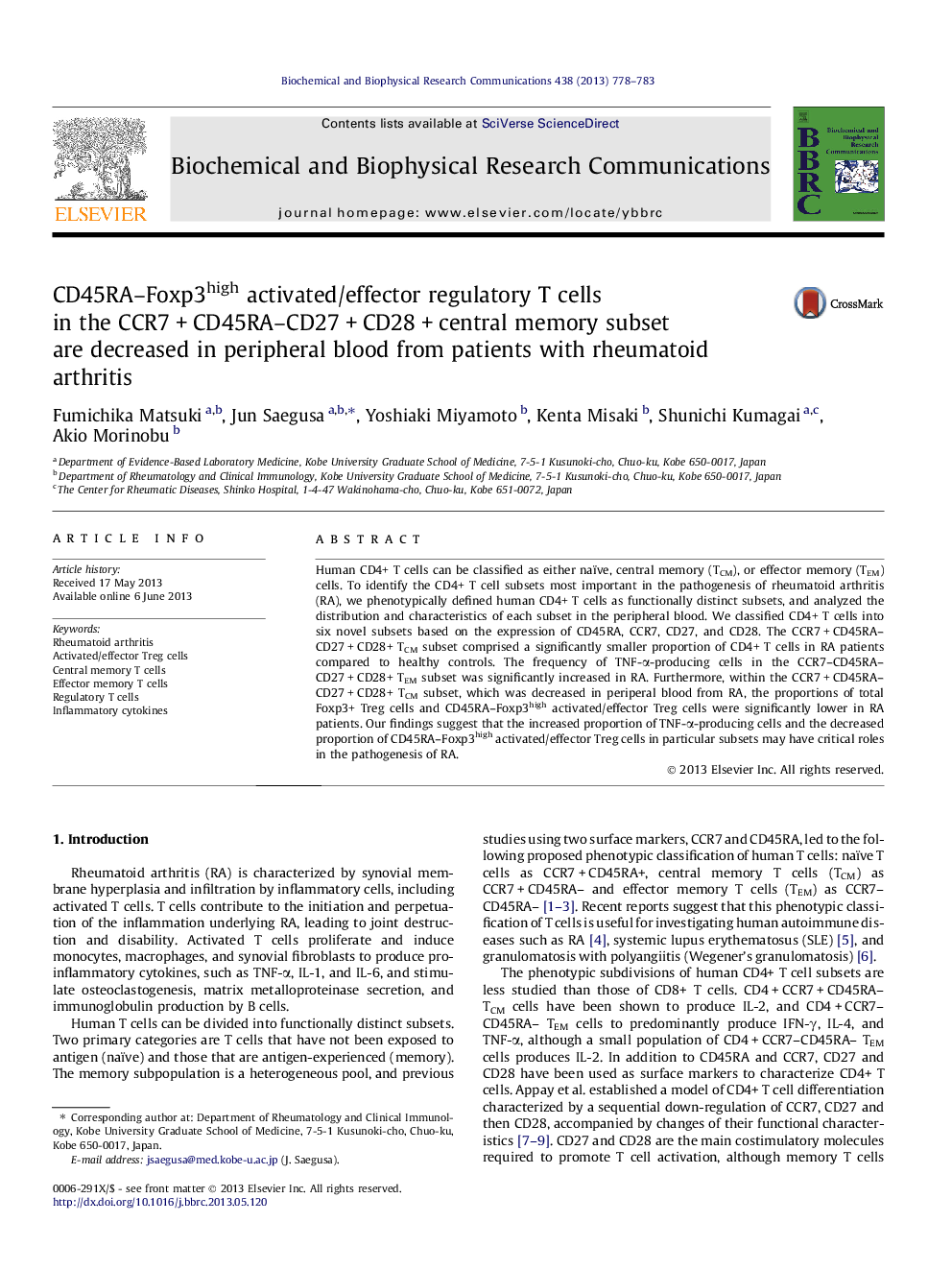| Article ID | Journal | Published Year | Pages | File Type |
|---|---|---|---|---|
| 10757984 | Biochemical and Biophysical Research Communications | 2013 | 6 Pages |
Abstract
Human CD4+ T cells can be classified as either naïve, central memory (TCM), or effector memory (TEM) cells. To identify the CD4+ T cell subsets most important in the pathogenesis of rheumatoid arthritis (RA), we phenotypically defined human CD4+ T cells as functionally distinct subsets, and analyzed the distribution and characteristics of each subset in the peripheral blood. We classified CD4+ T cells into six novel subsets based on the expression of CD45RA, CCR7, CD27, and CD28. The CCR7 + CD45RA-CD27 + CD28+ TCM subset comprised a significantly smaller proportion of CD4+ T cells in RA patients compared to healthy controls. The frequency of TNF-α-producing cells in the CCR7-CD45RA-CD27 + CD28+ TEM subset was significantly increased in RA. Furthermore, within the CCR7 + CD45RA-CD27 + CD28+ TCM subset, which was decreased in periperal blood from RA, the proportions of total Foxp3+ Treg cells and CD45RA-Foxp3high activated/effector Treg cells were significantly lower in RA patients. Our findings suggest that the increased proportion of TNF-α-producing cells and the decreased proportion of CD45RA-Foxp3high activated/effector Treg cells in particular subsets may have critical roles in the pathogenesis of RA.
Keywords
Related Topics
Life Sciences
Biochemistry, Genetics and Molecular Biology
Biochemistry
Authors
Fumichika Matsuki, Jun Saegusa, Yoshiaki Miyamoto, Kenta Misaki, Shunichi Kumagai, Akio Morinobu,
